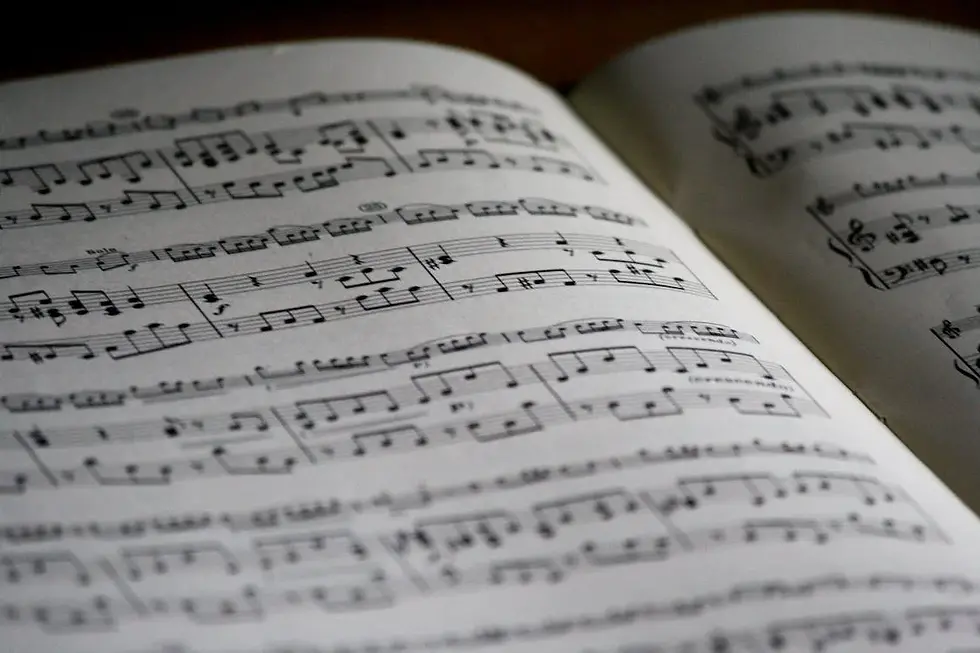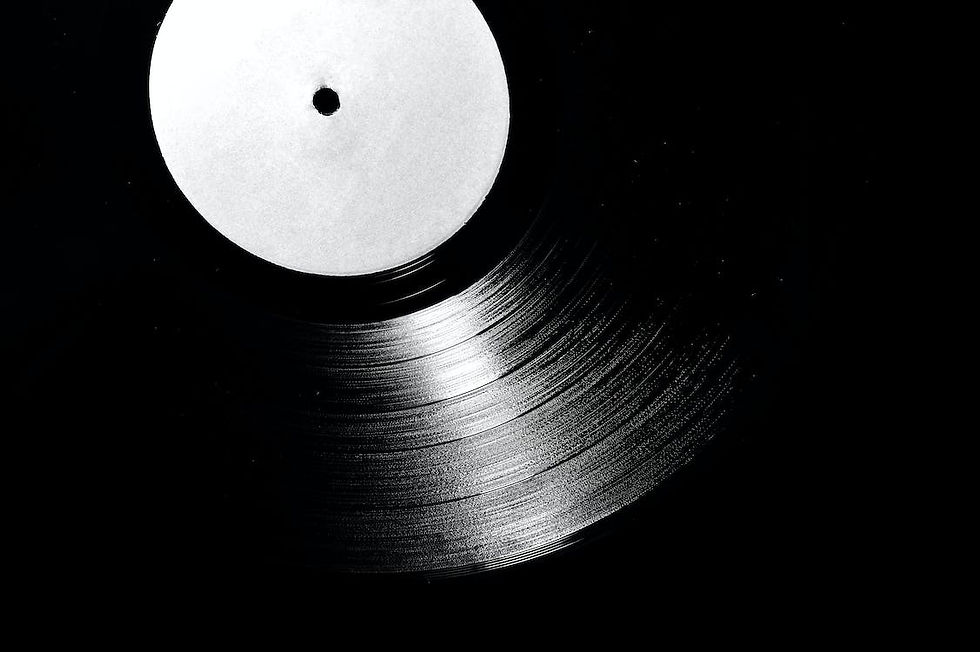The Evolution of Music Genres: A Historical Overview.
- The Moolah Team
- May 1, 2023
- 8 min read
In this blog post, we will take a look at the history of music genres and how they have evolved over time.
From classical music to pop, hip hop, and EDM, we will explore the origins of each genre and how they have influenced music today.
I. Introduction: The Evolution of Music Genres
Music has always been an integral part of human culture, serving as a medium of expression and a reflection of our societal values and beliefs. Over time, different genres of music have emerged, each with its own unique style, influences, and cultural significance. From classical music to hip hop, music genres have evolved and continue to evolve, shaping the music we hear today.
In this blog post, we will take a historical overview of the evolution of music genres, exploring their origins, characteristics, development, legacy, and influence. We will delve into classical music, jazz, rock, pop, hip hop, and other genres, tracing their roots, and examining how they have evolved over time. We will also explore how these genres have impacted and influenced the development of other music genres.
The history of music genres is an ever-evolving story that reflects the changing tastes and attitudes of society. Through our exploration of different music genres, we hope to give you a better understanding of the rich history of music and its impact on our lives today. So, join us on this journey as we explore the fascinating world of music genres and their evolution over time.

II. The Origins of Classical Music
Classical music is one of the oldest and most enduring genres of music, with roots dating back to the medieval period. The term "classical" refers to the music of the Classical period, which lasted from the mid-18th century to the early 19th century, but the origins of classical music go back much further.
Classical music has its roots in the religious music of the medieval period, which was predominantly vocal and focused on the liturgy of the Catholic Church. This music was often sung in Latin and featured complex harmonies and melismatic singing styles.
As music began to evolve and become more secular, composers began to experiment with new forms and styles. One of the most significant developments in classical music was the emergence of opera, a genre that combined music, drama, and spectacle.
Opera became popular in the 17th century and quickly spread throughout Europe, becoming a hallmark of the Baroque era. Composers such as Claudio Monteverdi, George Frideric Handel, and Johann Sebastian Bach were among the most notable composers of Baroque opera.
In the Classical period, composers such as Wolfgang Amadeus Mozart, Ludwig van Beethoven, and Franz Joseph Haydn further developed the musical forms of opera, symphony, and sonata. Their music featured a more balanced and refined approach to melody, harmony, and rhythm, with an emphasis on clarity, symmetry, and elegance.
Classical music has continued to evolve over the centuries, with new composers and styles emerging in different parts of the world. Today, classical music is still performed and enjoyed by millions of people around the world, with many new compositions and interpretations continuing to push the boundaries of the genre.

III. The Emergence of Jazz
Jazz is a genre of music that emerged in the early 20th century, primarily in the African American communities of New Orleans, Louisiana. The roots of jazz can be traced back to the musical traditions of West Africa, which were brought to the United States during the transatlantic slave trade.
In New Orleans, African American musicians began to combine the rhythms and melodies of their African musical heritage with the European musical traditions they were exposed to in their daily lives. The result was a unique musical style that was characterized by its improvisational nature, complex harmonies, and syncopated rhythms.
Jazz quickly spread throughout the United States, becoming popular in cities such as Chicago, New York, and Kansas City. Jazz musicians such as Louis Armstrong, Duke Ellington, and Charlie Parker became household names, and the genre began to influence other forms of music, including pop, rock, and classical.
Jazz also played an important role in the civil rights movement, as many African American jazz musicians used their music to express their political and social views. Jazz was often performed in integrated bands, and the genre helped to break down racial barriers and promote equality.
Today, jazz continues to evolve and thrive, with new artists and styles emerging all the time. Jazz festivals and concerts are held around the world, and the genre remains an important cultural expression that reflects the diversity and vibrancy of our society.

IV. The Rise of Rock and Roll
Rock and roll is a genre of music that emerged in the United States in the 1950s. It grew out of a combination of several musical styles, including blues, country, and gospel, and was heavily influenced by the African American musical traditions that had previously given rise to jazz and rhythm and blues.
The term "rock and roll" was originally slang for sex, but it came to be associated with the new music that was being played by young musicians in the United States. Rock and roll was characterized by its upbeat tempo, simple chord progressions, and heavy use of electric guitars and drums.
The early pioneers of rock and roll included Chuck Berry, Little Richard, and Elvis Presley, who became popular in the mid-1950s. Their music was controversial at the time, as it was seen as rebellious and a threat to traditional values. Nevertheless, rock and roll continued to grow in popularity, and by the 1960s, it had become the dominant form of popular music in the United States.
Rock and roll also had a significant impact on popular culture, influencing fashion, film, and television. The Beatles, who emerged in the early 1960s, were perhaps the most successful and influential rock band of all time, and their music and style had a profound impact on the world.
Today, rock and roll remains a popular and influential genre of music, with new artists continuing to emerge and push the boundaries of the genre. Its legacy can be seen in a wide range of musical styles, from heavy metal to indie rock, and its impact on popular culture continues to be felt around the world.

V. The Emergence of Hip Hop
Hip hop is a genre of music that originated in African American and Latino communities in New York City in the 1970s. It was born out of a combination of several musical styles, including funk, soul, and disco, and was heavily influenced by the spoken word traditions of African American culture.
Hip hop music is characterized by its use of beats, which are created using drum machines, synthesizers, and other electronic instruments. It also features the use of rapping, which is a form of spoken word poetry that is typically delivered in a rhythmic and rhyming style.
One of the earliest and most influential hip hop groups was the Sugarhill Gang, whose 1979 hit "Rapper's Delight" helped to bring the genre to mainstream audiences. Other important early hip hop artists include Grandmaster Flash and the Furious Five, Run-DMC, and LL Cool J.
Hip hop continued to evolve throughout the 1980s and 1990s, with new subgenres and styles emerging, including gangsta rap, conscious rap, and alternative hip hop. The genre also had a significant impact on fashion, dance, and visual art, with graffiti and breakdancing becoming important elements of hip hop culture.
Today, hip hop remains one of the most popular and influential genres of music, with artists from around the world continuing to push the boundaries of the genre and explore new sounds and styles. Its impact can be seen in a wide range of musical genres, from pop to R&B to electronic music, and its influence on popular culture continues to be felt around the world.

VI. The Rise of Electronic Dance Music
Electronic Dance Music, commonly referred to as EDM, is a genre of music that has seen a surge in popularity over the past few decades. EDM is characterized by its use of electronic instruments, such as synthesizers, drum machines, and samplers, to create high-energy dance tracks.
The origins of EDM can be traced back to the disco and house music scenes of the 1970s and 1980s, but the genre really took off in the 1990s and 2000s with the emergence of techno, trance, and other subgenres.
One of the key factors behind the rise of EDM has been the growth of music festivals and raves, which provide a space for fans of the genre to come together and dance to their favourite DJs and producers. Some of the most popular EDM festivals include Ultra Music Festival, Electric Daisy Carnival, and Tomorrowland.
EDM has also had a significant impact on popular culture, with the genre's high-energy beats and catchy melodies finding their way into mainstream music and even television and film. Some of the most successful EDM artists include Calvin Harris, David Guetta, and Swedish House Mafia.
Despite its widespread popularity, EDM has faced criticism from some quarters for its focus on spectacle and commercial success at the expense of artistic integrity. However, many fans and artists see EDM as a way to bring people together and create a sense of community through music and dance.
In recent years, EDM has continued to evolve and push boundaries, with new subgenres and styles emerging all the time. Whether you love it or hate it, there's no denying that EDM has had a major impact on the music industry and popular culture as a whole.

VII. The Future of Music Genres
As technology continues to advance and society changes, it's likely that we'll continue to see new music genres emerge and evolve. Some experts predict that we may see a blurring of genres in the future, with artists experimenting with elements of multiple styles to create unique and innovative sounds.
Another potential trend is the rise of virtual and augmented reality experiences in music, which could allow fans to immerse themselves in interactive and personalized musical environments.
It's also worth considering the impact of social media and streaming platforms on the music industry. With the rise of TikTok and other social media platforms, songs and artists can go viral in a matter of hours, and artists can reach new audiences around the world with just a few clicks.
At the same time, streaming services like Spotify and Apple Music have changed the way we consume and discover music, with algorithms and curated playlists helping listeners discover new artists and songs.
However, these changes have also led to concerns about the impact of technology on the music industry, particularly in terms of artist compensation and the value of music as an art form.
Despite these challenges, there's no doubt that music will continue to evolve and adapt to new technologies and cultural trends. As music lovers, we can look forward to discovering new sounds and genres, and experiencing the emotional and cultural connections that only music can provide.

VIII. Conclusion
In this historical overview of music genres, we've explored the origins and evolution of some of the most popular and influential styles of music. From classical music to hip hop, and from rock to EDM, each genre has its own unique characteristics and cultural significance.
Throughout history, music has been a reflection of the cultural and societal contexts in which it was created, from the classical music of the aristocracy to the protest songs of the civil rights movement. Today, music continues to be a powerful form of expression, connecting people across cultural and linguistic barriers and inspiring creativity and emotional connection.
As music fans, it's important to appreciate and celebrate the diversity of musical styles and traditions, and to recognize the complex social, political, and cultural factors that shape the music we love.
At the same time, we must also be aware of the challenges facing the music industry, from issues of artist compensation and copyright infringement to the impact of technology and social media on the way we consume and discover music.
Ultimately, the future of music genres is shaped by the creativity and innovation of artists and producers, as well as by the changing social and cultural contexts in which music is created and consumed. As music lovers, we can look forward to experiencing new sounds and styles, and to connecting with others through the universal language of music.
Thanks for reading this in-depth historical overview of music genres. We hope you've gained a greater appreciation for the rich cultural and social significance of different musical styles, and that you've discovered new genres to explore and enjoy.
If you found this post informative and engaging, be sure to subscribe to our newsletter to stay up-to-date on the latest music news, trends, and insights. And don't forget to share this post with your friends and fellow music lovers.
Thanks again for joining us on this journey through the evolution of music genres. Keep listening, keep exploring, and keep celebrating the diversity and beauty of music in all its forms.
Thanks a million,
Moolah






Comments